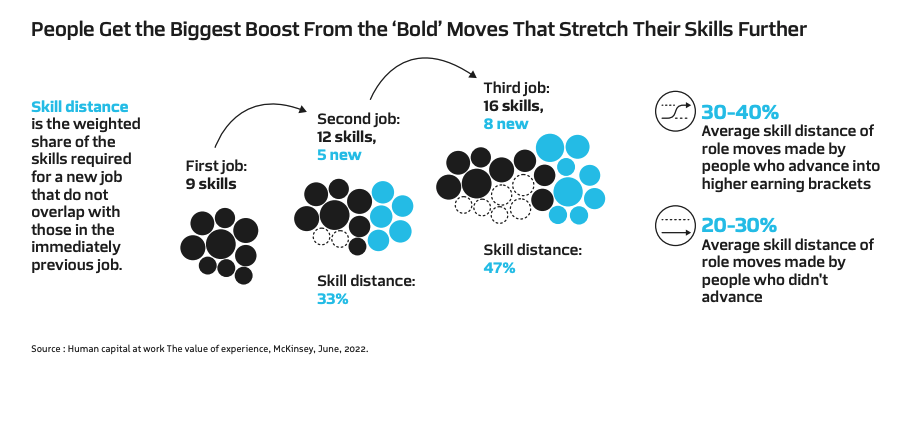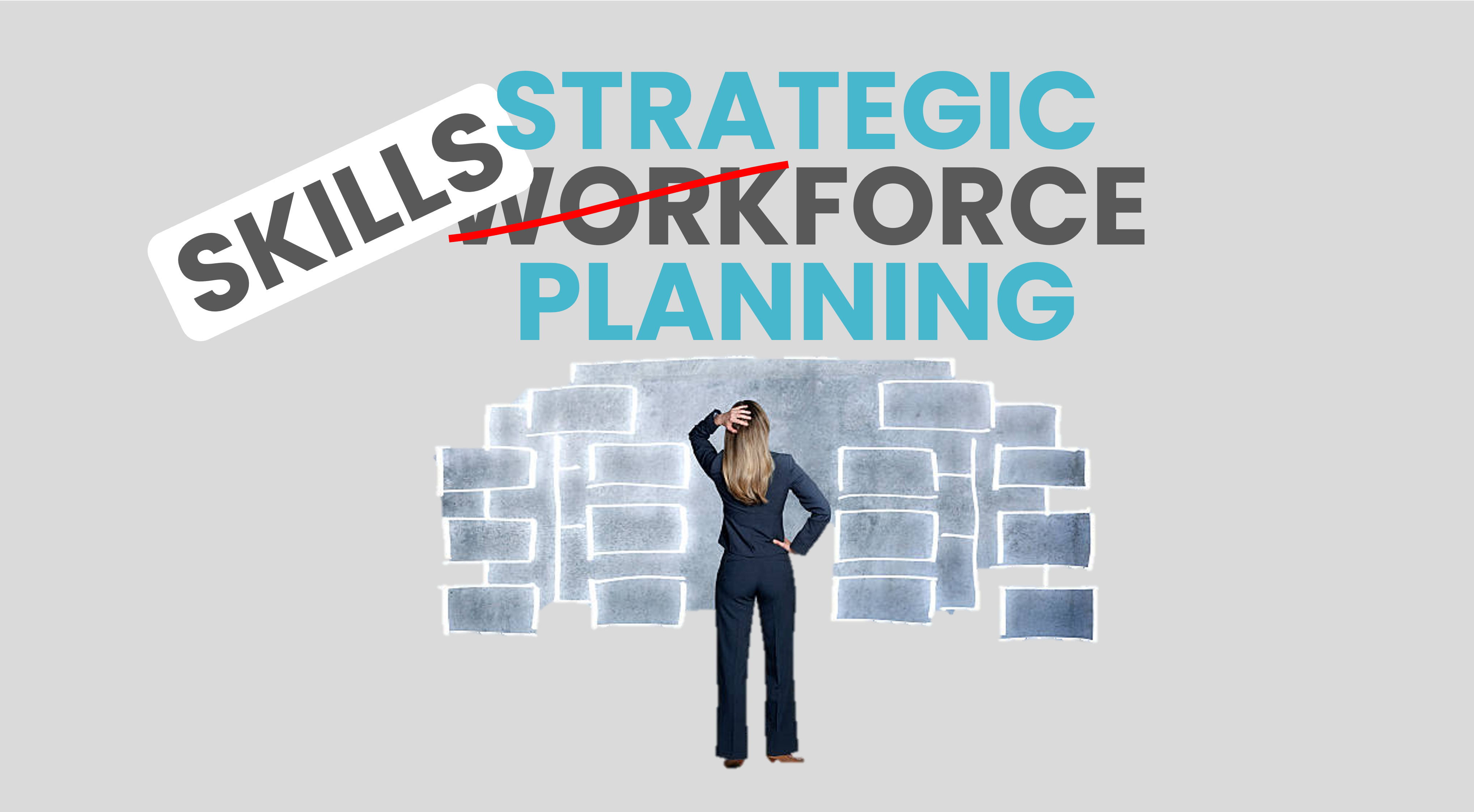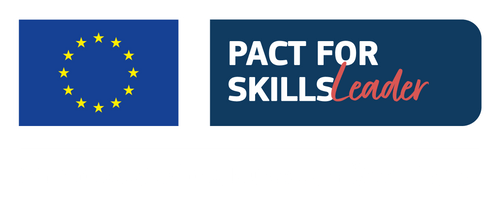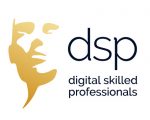When business leaders want to become data-driven, embrace new technology or launch a different product line, the skills of the organization can be a game changer or a potential downfall. In today’s competitive labor market and rapidly changing business environment, the continuous need and coordination for the right skills for your workforce is key.
Should we buy new skills (recruit), build (up/reskill), borrow (contingent), or bot (automate) to drive success? Or do we already have the right skills ready for this new initiative? The answer is: most companies don’t know.
We find that organizations are increasingly recognizing the value of Strategic Workforce Planning (SWP). However, many organizations have struggled with implementing it effectively.
What is strategic workforce planning and its importance?
Strategic workforce planning forms a bridge between your people strategy and your business strategy. In simple terms, getting the right people with the right skills in place at the right time and at the right cost in order to fulfill an organization’s mission and goals.
Strategic workforce planning is also about analyzing and optimizing its workforce. This means determining the steps it must take to prepare for future staffing needs. This sounds easy, right?
But the reality is different according to a global Workday research:
- Only 12 percent of organizations say that data is fully accessible to those who need it
- Nearly 4 in 10 C-level executives point to a lack of relevant workforce skills as the biggest blocker of transformation at their organizations, Workday research shows
- Roughly half of leaders (49 percent) say that an inability to connect operational, people, and financial data to business outcomes impairs agility
Make-or-break planning simply can’t happen when data cribbed from siloed departments is put into a static plan.
“Businesses will encounter constant disruptions in the future”
Sandeep Mota, director, human capital advisory at KPMG
For example a large IT organization that offers Cloud Application services, rely daily on their Senior Enterprise Architects. More than half of that group is retiring within 6-8 years. Now is the time to upskill young Business Analysts to Junior Enterprise Architects and mix them together on assignments to transfer knowledge and skills that leave the organization in the near future.
The capabilities and skills that will determine an organization’s performance 5, 10 or 15 years into the future may look very different from the cornerstone capabilities we rely on today. Strategic workforce planning is not only focused on the short term, but also takes into account the need to build a future-proof talent pool.
Six steps of the workforce planning process
The workforce planning process can be categorised into six key steps. As an organization, it helps to sit down and define answers to each of these to try and bring meaning to each. HR may drive the conversation, it is imperative that many key stakeholders find themselves a seat at the table. Read this article of Personio for steps in the right direction.
Read here how a ‘strategic’ workforce planning is distinguished from a ‘operational’ workforce planning?
Skills fog
- Lack of Identified and Understood Current Skills:
To plan for the future, you first need a clear picture of your present. Many organizations struggle to identify and understand the current skills possessed by their employees. Without this foundational knowledge, it’s nearly impossible to make informed decisions about the skills needed for the future.
- Misalignment between Business Strategy and Future Skills:
Even if an organization can identify its current skills, there’s often a misalignment between its business strategy and the skills required in the future. Business strategies evolve rapidly in response to market dynamics, emerging technologies, and changing customer demands. However, the skills needed to execute these strategies are not always readily apparent.
This lack of alignment between business strategy and future skills can be detrimental. It can result in organizations investing in skill development that does not directly contribute to their strategic objectives. Conversely, they may miss critical skills needed for future success.
Many organizations still find themselves with a significant challenge when it comes to strategic workforce planning, due to a so called ‘skills fog’ that is primarily a result of two critical issues:
To illustrate this point, consider a company planning to embrace data-driven decision-making to gain a competitive edge. Their business strategy is to harness the power of data analytics and artificial intelligence. However, the workforce currently lacks the necessary data analysis and AI skills. Without a clear strategy for upskilling or recruiting employees with these skills, the organization’s strategic objectives may remain out of reach.
Start digging the ‘hidden gold’ first
When closing talent gaps, companies have historically relied on external acquisition, but recruiting alone is rarely the most efficient or cost-effective route. Are you not convinced?
In the last 12 months, 50% of candidates have accepted a job offer – and then backed out before starting, according to a Gartner HR Survey.
So often, existing talent is the ‘hidden gold’ just waiting to be mined. More than half of organizations plan to reskill at least 50 percent of their workforce, but it usually ends with ad hoc learning opportunities or a more formal reskilling program.
Investing in target upskills programs to facilitate internal talent mobility can help the organization deploy the right talent when needed. Read an article here about four ways companies can find the ‘hidden talent’.

The mix of workforce planning and skills development pays off in other ways, too. More than half of employees feel it’s important for their employer to provide opportunities for personal growth.
As employees increasingly look to employers to invest in their growth and development, strategic workforce planning and skills development will drive employee engagement, employer brand reputation and even productivity.
“Cloud-based skills development can help employees learn new skills aligned with the context of work and their purpose, create more meaningful career paths, and increase organizational success at the same time.”
According to a McKinsey research true skills acquisition is no longer a simple function of the types and number of an individual’s educational qualifications, but an ongoing process shaped most significantly by work experience and professional development. In addition, simple work mobility is not the same as roles that push individuals into unfamiliar. Research indicates that work experience matters more than we think, and individuals in the most upwardly mobile cohorts make bold moves more frequently.

When workforce planning becomes Strategic Skillsforce Planning (SSP)
Traditional workforce planning with a top-down approach of existing job architectures with titles, which were built around the functional hierarchy, often hold companies back from target upskilling and mining the ‘hidden gold’.
Consider not using job titles anymore, because they change all the time. Your company just needs new “roles and skills,” with titles that change over time. Josh Bersin calls it “job clusters,” groups of job titles associated with a set of roles and skills. In this way companies have to think about their workforce differently. Read more about his Global Workforce Intelligence Project.
When moving to roles and skills, the effective combination of focusing on skills data, talent data and business objectives, makes it possible to organize what I call Strategic Skillsforce Planning (SSP).
With real-time skills data aligned with business strategy and headcount planning, HR can share data-driven insights, which helps business leaders strategically better plan their future workforce. In this article C-suite executives, HR and learning leaders recognize the power of skills and that skills are unleashing human potential and fueling agility towards a skills-based organization.

HR leaders must gather relevant information to identify existing skill gaps within the organization. Having the right skills is more important than ever in today’s data-driven, digital economy.
Ultimately, the Strategic Skillsforce Planning model serves as a roadmap, to choose where to invest in people, and identify actions required to acquire, retain, develop and deploy the workforce.
Having a sound workforce plan in place will help you optimize costs, prepare for demographic changes, create a long-term recruitment strategy and, at the end of the day, improve your bottom line. Especially if you are a large company hiring for hundreds of roles every year you need to think strategically about how your workforce can achieve the highest productivity at any given moment. Don’t hesitate to ask someone (externally) who’s more experienced to help you on your way towards successful strategic workforce planning.
Would you like to discuss a strategic workforce planning or skills development in your team? Reach me out here. Let’s improve productivity and engagement of employees by putting your skills centrally in your strategy.
About the author
Jan-Willem Nieuwenhuys is Managing Partner of Digital Skilled Professionals and is a trusted advisor in the field of skills management to make organizations future-ready.
Jan-Willem is also host of the Learning & Skills Management podcast 🔊
Work changes quickly. Learning and transforming is a challenge for organizations. In these podcasts, we have conversations with learning leaders, professionals, and solution providers who have applied successful methods to transform a business environment.





